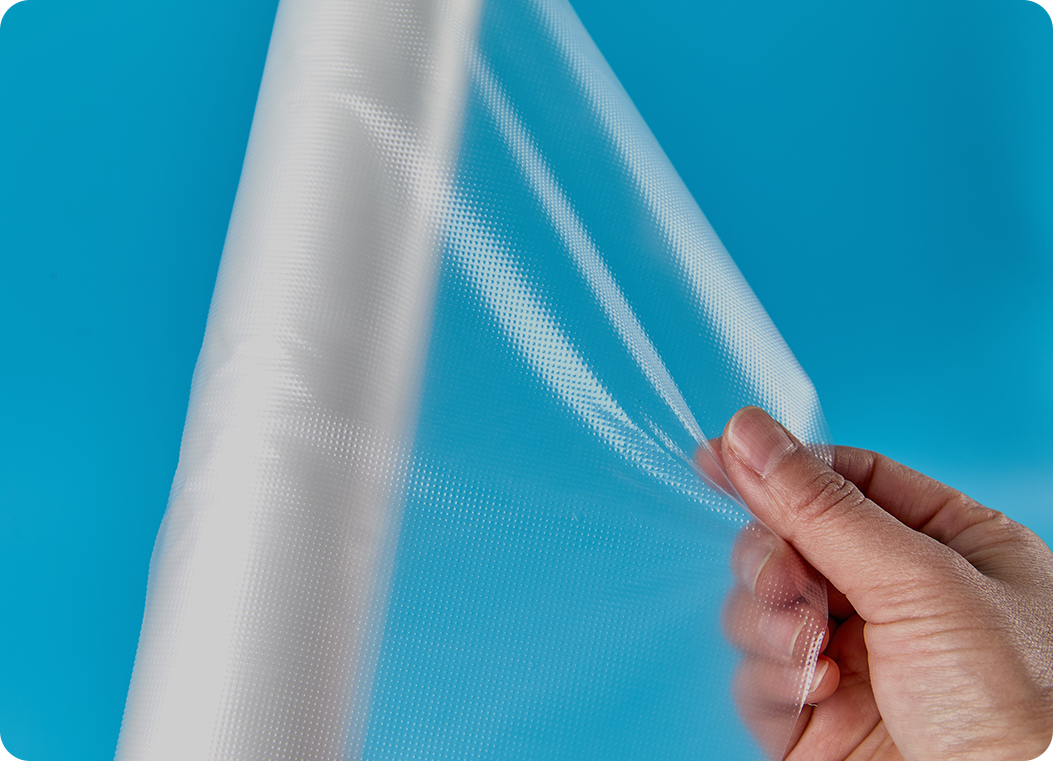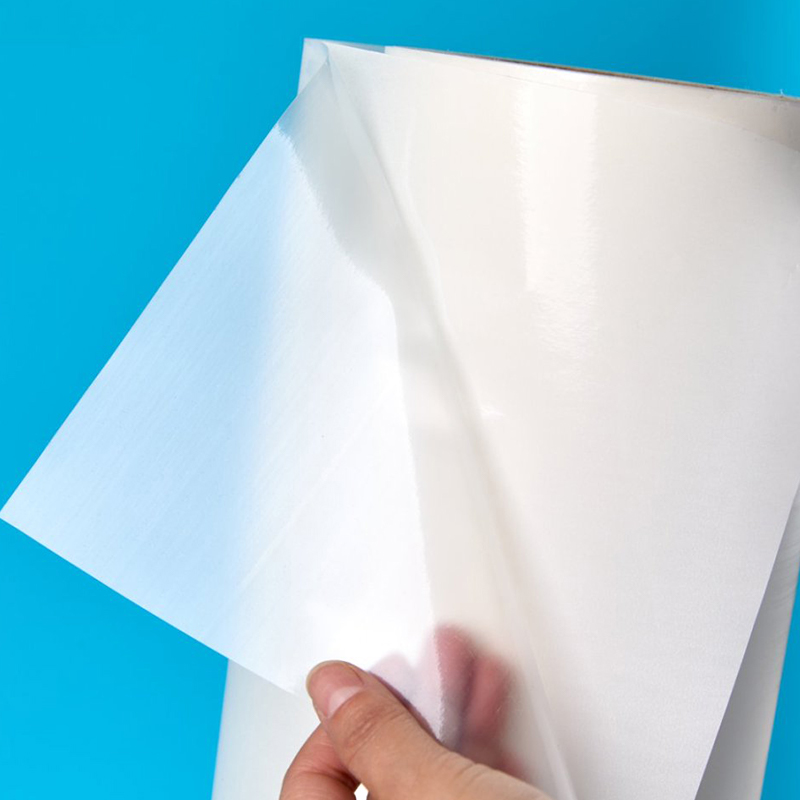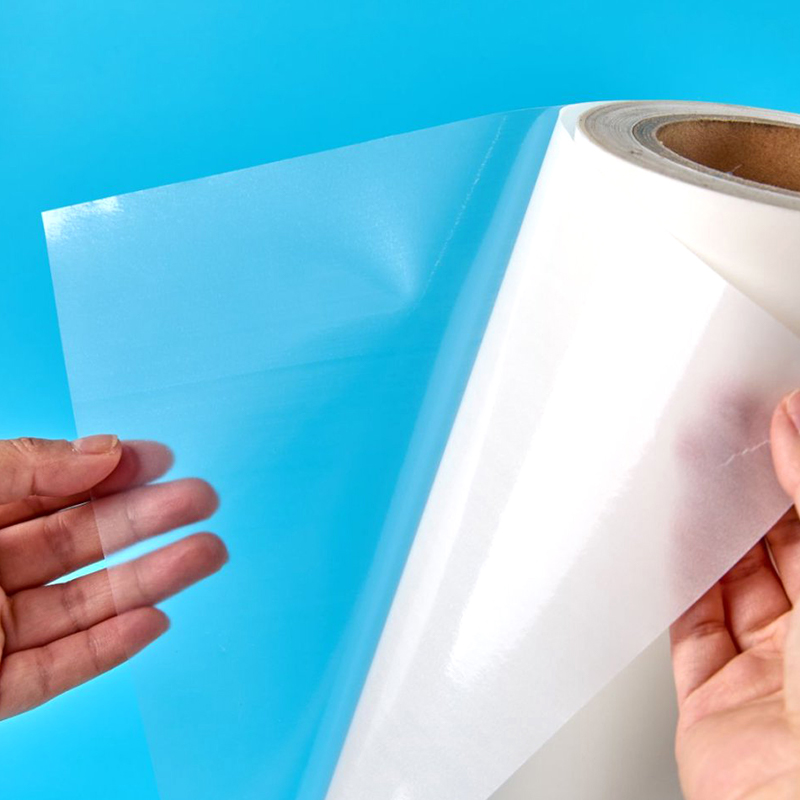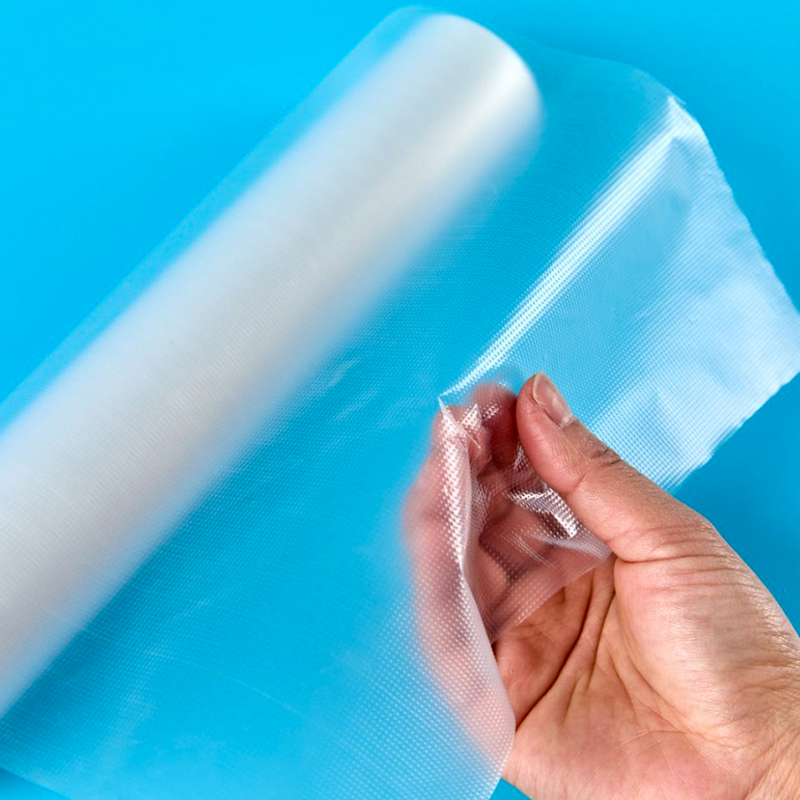The Rise of Embroidery Hot Melt Adhesive Films: Redefining Modern Textile Bonding
In the ever-evolving textile and apparel industry, innovation often hinges on materials that bridge functionality and aesthetics. One such breakthrough is hot melt adhesive films (HMA films) tailored for embroidery applications. These specialized films have transformed traditional embroidery processes by replacing mechanical stitching or liquid adhesives with a clean, durable, and efficient bonding solution. Unlike conventional methods, embroidery hot melt adhesive films enable seamless attachment of patches, logos, and decorative elements while preserving fabric flexibility and visual appeal. This technology is rapidly gaining traction in sectors ranging from high-fashion to automotive interiors, driven by demands for speed, sustainability, and precision.
What Are Embroidery Hot Melt Adhesive Films?
Hot melt adhesive films are thermoplastic materials activated by heat and pressure to create instant bonds between fabrics or layers. Designed explicitly for embroidery, these films are engineered to withstand needle penetration during stitching while providing a stable base for designs. They typically come in sheets or rolls with thicknesses ranging from 0.05mm to 0.5mm, tailored to fabric weights and end-use requirements. Composed of polymers like polyamide (PA), polyester (PES), or ethylene-vinyl acetate (EVA), these films melt at controlled temperatures (usually 80°C–160°C) and solidify upon cooling, forming permanent bonds without residue.
The key distinction of embroidery-grade films lies in their puncture resistance and compatibility with high-speed embroidery machines. Unlike generic adhesives, they must endure repeated needle strikes without tearing or gumming up equipment. Advanced formulations also incorporate anti-static properties to prevent thread entanglement and low-temperature variants for heat-sensitive fabrics like chiffon or performance knits.
Why the Industry is Shifting to Adhesive Films
Traditional embroidery techniques rely heavily on manual stitching or fusible interfacing, which have inherent limitations. Stitched attachments can cause fabric puckering, add bulk, or fray over time, while liquid adhesives often lead to uneven application or toxic emissions. Hot melt adhesive films address these issues by offering:
1. Seamless Aesthetics: Eliminates visible stitching or glue marks, crucial for luxury apparel and seamless sportswear.
2. Process Efficiency: Reduces production steps by combining bonding and embroidery in a single pass. For example, a logo patch can be heat-pressed onto a garment and embroidered simultaneously.
3. Durability: Resists washing, dry cleaning, and abrasion better than thread or glue, extending product lifespans.
4. Eco-Friendly Potential: Some films are recyclable or bio-based, aligning with global sustainability mandates like the EU's Green Deal.
A notable case is the athletic wear industry, where brands like Nike and Adidas use adhesive films to attach lightweight ventilation panels without compromising stretch or moisture-wicking properties. Similarly, automotive interiors employ these films to bond embroidered dashboard covers without bulky seams that could wear down over time.
Technical Mechanisms: How It Works
The bonding process involves three stages:
1. Activation: The film is placed between the fabric and the embroidery substrate (e.g., a patch). Heat (via press or laser) melts the adhesive, while pressure ensures even distribution.
2. Penetration: During embroidery, needles pierce through the molten film, which then re-fuses around the threads, locking stitches in place.
3. Curing: Cooling solidifies the adhesive, creating a bond stronger than the fabric itself.
Critical parameters include melting temperature, viscosity, and open time (the window for repositioning before curing). For instance, PES-based films excel in polyester fabrics due to similar melting points, while EVA films suit stretchable materials like spandex.
Challenges in Adoption
Despite advantages, challenges persist:
- Material Compatibility: Not all fabrics bond equally; silicone-coated or waterproof materials may require primers.
- Cost: High-performance films (e.g., those with flame retardancy) can be 20–30% pricier than traditional options.
- Skill Gaps: Operators must master temperature and pressure settings to avoid scorching or weak bonds.
The Road Ahead
As smart textiles and customization surge, adhesive films are adapting. Innovations like conductive adhesive films for e-textiles or UV-resistant films for outdoor gear hint at future potential. Meanwhile, regulatory pressures are pushing brands toward halogen-free and biodegradable formulations.
The Technology Behind Embroidery Hot Melt Adhesive Films
At the heart of modern textile bonding solutions lies an intricate combination of material science and engineering precision. Embroidery hot melt adhesive films represent a sophisticated category of thermoplastic materials specifically designed to meet the rigorous demands of contemporary embroidery applications. These films have evolved from simple bonding agents to highly engineered solutions that address multiple technical challenges in textile manufacturing.
Material Composition and Formulation
The performance characteristics of embroidery adhesive films are primarily determined by their polymer base and additive packages. The three most common polymer bases include:
1. Polyamide (PA): Known for their excellent thermal stability and chemical resistance, PA-based films typically operate in the 120-160°C range. They form particularly strong bonds with natural fibers like cotton and wool, making them ideal for high-end apparel applications. Recent advancements have led to the development of bio-based polyamides derived from castor oil, offering more sustainable alternatives.
2. Polyester (PES): PES films demonstrate remarkable compatibility with synthetic fabrics, especially polyester textiles. Their melting range of 80-140°C allows for use with heat-sensitive materials. A key advantage is their excellent UV resistance, crucial for outdoor applications like automotive interiors or performance wear.
3. Ethylene-Vinyl Acetate (EVA): With the lowest processing temperatures (70-100°C), EVA-based films are the go-to choice for delicate fabrics and stretch materials. Their inherent flexibility makes them particularly suitable for activewear and intimate apparel where movement comfort is paramount.
Beyond these primary polymers, manufacturers incorporate specialized additives to enhance performance:
- Plasticizers: Improve flexibility and reduce brittleness, especially important for films used on stretch fabrics - Tackifiers: Enhance initial grab and reduce open time for high-speed production - Anti-block agents: Prevent film layers from sticking together during storage - Flame retardants: Critical for automotive and aerospace applications - Colorants: Neutral or fabric-matching tones to maintain aesthetic integrity
Physical Properties and Performance Metrics
The effectiveness of an embroidery adhesive film is measured against several key performance indicators:
Melt Flow Index (MFI): This critical parameter, typically ranging from 5-50 g/10min (190°C/2.16kg), determines how easily the molten adhesive flows into fabric interstices. Lower MFI films maintain dimensional stability during embroidery, while higher MFI materials penetrate deeper for stronger bonds.
Needle Penetration Resistance: Measured in Newtons per square millimeter, this property quantifies a film's ability to withstand the puncture forces of high-speed embroidery needles (often exceeding 1,000 stitches per minute) without tearing or creating excessive fuzz.
Thermal Stability Window: The temperature range between melting point and degradation point must be sufficiently wide (typically 30-50°C) to accommodate process variations. Advanced films now incorporate thermal stabilizers that extend this window up to 70°C.
Peel Strength: Standardized tests (e.g., ASTM D903) measure bond strength, with premium films achieving 8-12 N/cm on cotton substrates after multiple wash cycles.
Manufacturing Processes
The production of high-quality embroidery films involves multiple precision stages:
1. Compounding: Base polymers are blended with additives in twin-screw extruders at precisely controlled temperatures. This stage determines the material's fundamental properties.
2. Film Formation: The molten compound is cast or blown into thin films, with thickness control critical to ±2 microns. Modern plants use laser gauges for real-time thickness monitoring.
3. Surface Treatment: Corona or plasma treatment modifies surface energy to enhance wettability during melting. Treatment levels of 38-42 dynes/cm are typical for textile applications.
4. Slitting and Packaging: Films are slit to required widths (common sizes: 10mm, 25mm, 50mm) and wound onto cores with interleaving papers to prevent blocking.
Application Technologies
Modern embroidery systems have adapted to leverage adhesive film capabilities through several application methods:
Pre-Placement Systems: Automated dispensers precisely position film patches before the embroidery process begins. Advanced vision systems ensure placement accuracy within 0.5mm.
In-Machine Activation: Some high-end embroidery machines now integrate heating elements that activate the film during the stitching process, reducing production steps.
Hybrid Bonding: Combining adhesive films with minimal stitching creates "secure seams" for critical applications like military insignia or medical textiles.
Technical Challenges and Solutions
Despite their advantages, adhesive films present unique technical challenges that require innovative solutions:
Needle Gumming: At high speeds, adhesive residue can accumulate on needles. New polymer formulations incorporate lubricants like PTFE microparticles to reduce buildup by up to 70%.
Wash Durability: Repeated laundering can weaken bonds. Cross-linking agents create three-dimensional networks that maintain integrity through 50+ wash cycles.
Breathability: Solid films can trap moisture. Microperforated versions (with 50-100 micron pores) maintain vapor transmission rates over 2000 g/m²/24h.
Emerging Technological Advancements
The frontier of embroidery film technology includes several promising developments:
Phase Change Materials: Films that absorb excess heat during processing then release it during cooling, reducing energy consumption by up to 25%.
Conductive Formulations: Silver nanowire or carbon-filled films that enable e-textile integration without compromising embroidery aesthetics.
Smart Responsive Films: Materials that change properties (e.g., becoming water-soluble) at specific triggers, facilitating recycling.
Nanocomposite Films: Incorporating nano-clay or cellulose nanocrystals to enhance strength while reducing material usage by 30-40%.
As these technologies mature, they promise to further expand the applications and performance boundaries of embroidery adhesive films across industries.
Diverse Applications of Hot Melt Adhesive Films in Modern Embroidery
The advent of hot melt adhesive films has revolutionized embroidery applications across multiple industries, enabling innovative design possibilities while improving production efficiency. These specialized bonding materials have found their way into nearly every sector that utilizes embroidered textiles, from high-fashion runways to technical industrial applications. The unique properties of adhesive films - including their clean application, durability, and compatibility with various fabrics - have opened new frontiers in textile decoration and functional enhancement.
Fashion and Apparel Industry Applications
In the competitive world of fashion, adhesive films have become indispensable for creating intricate designs with flawless finishes:
Luxury Brand Logos and Monograms: High-end fashion houses utilize ultra-thin adhesive films (0.05-0.1mm) to attach delicate embroidered logos without the bulk of traditional stitching. This maintains the drape and hand-feel of premium fabrics like silk and cashmere while ensuring precise placement of brand identifiers.
Seamless Embellishments: Designers now create complex multi-layer embroideries by bonding various fabric elements with adhesive films before final stitching. This technique allows for dramatic 3D effects without compromising garment comfort or flexibility.
Stretch Fabric Solutions: Specialized elastic adhesive films enable embroidery on performance knits and stretch fabrics that would normally pucker or distort with conventional methods. These films move with the fabric, maintaining design integrity even after repeated stretching.
Sportswear and Performance Apparel
The athletic wear sector has embraced adhesive film technology to meet demanding performance requirements:
Ventilation Panel Attachment: Advanced moisture-wicking fabrics in sportswear often incorporate strategically placed mesh panels. Adhesive films provide secure bonding without compromising breathability, with some specialized formulations offering moisture-vapor transmission rates exceeding 3000g/m²/24h.
Number and Nameplate Application: Team uniforms require durable identification that withstands rigorous washing and abrasion. Adhesive-backed embroidered elements maintain crisp edges through 50+ industrial washes, outperforming traditional stitched applications.
Seam Reinforcement: In high-stress areas like shoulder seams, adhesive films provide invisible reinforcement that reduces seam failure while eliminating chafing. Some performance films incorporate antimicrobial properties to address odor concerns in activewear.
Automotive Interior Applications
The automotive industry has adopted embroidery adhesive films to meet both aesthetic and functional requirements:
Dashboard and Console Embellishments: Luxury vehicle interiors feature intricate embroidered elements bonded with high-temperature resistant films (withstanding up to 120°C) that won't degrade in hot car environments. These films must also pass stringent fogging tests to prevent interior air quality issues.
Seat Cover Attachments: Modern vehicle seats incorporate embroidered logos and decorative elements secured with flame-retardant adhesive films that meet FMVSS 302 safety standards. The bonding process allows for precise placement without needle marks that could compromise leather or premium fabrics.
Headliner Reinforcement: Adhesive films provide structural support for overhead console attachments while maintaining the clean appearance of premium headliner materials. Special low-odor formulations are required for enclosed vehicle interiors.
Home Textiles and Interior Decor
Residential and commercial interiors benefit from adhesive film applications in various ways:
Custom Drapery and Upholstery: Interior designers utilize adhesive films to apply embroidered designs to delicate fabrics that can't withstand traditional stitching. This enables intricate patterns on sheer curtains or velvet upholstery without visible stitching or fabric distortion.
Bedding and Linens: High-thread-count sheets and duvet covers often feature embroidered details applied with ultra-fine adhesive films that maintain fabric softness. Some premium hotels specify these methods for their linens to ensure durability through commercial laundering.
Wall Coverings: Textile wall panels with embroidered elements use adhesive films for secure attachment without damaging the underlying substrate. This application requires films with balanced moisture permeability to prevent bubbling or delamination.
Technical and Industrial Applications
Beyond decorative uses, adhesive films serve critical functions in specialized sectors:
Medical Textiles: Surgical drapes and hospital privacy curtains incorporate identification markings applied with biocompatible adhesive films that withstand repeated sterilization. These films must pass ISO 10993 biocompatibility testing while maintaining adhesion through autoclave cycles.
Military and Tactical Gear: Camouflage patterns and identification patches on field equipment utilize adhesive films formulated for extreme environmental resistance. These specialized products maintain adhesion in temperatures ranging from -40°C to 80°C while resisting fuel, solvents, and UV degradation.
Airline Interior Components: Aircraft seat covers and interior panels use lightweight adhesive films that meet FAA flammability requirements while reducing weight compared to traditional stitching - a critical factor in aviation where every gram impacts fuel efficiency.
Emerging and Niche Applications
Innovative uses continue to emerge as material technology advances:
Smart Textile Integration: Conductive adhesive films enable the seamless incorporation of electronic components into embroidered smart garments. These specialized films provide both physical attachment and electrical connectivity for wearable tech elements.
Sustainable Fashion Solutions: Bio-based adhesive films facilitate the assembly of recyclable clothing by allowing clean separation of components at end-of-life. Some circular fashion initiatives specify these films to enable easier material recovery.
Architectural Textiles: Large-scale tensile structures and artistic installations use heavy-duty adhesive films to secure embroidered elements that must withstand years of outdoor exposure while maintaining precise dimensional stability.
The versatility of embroidery hot melt adhesive films continues to expand as manufacturers develop specialized formulations for increasingly demanding applications. From haute couture to space exploration textiles, these bonding solutions have become essential tools for combining aesthetic appeal with technical performance in modern embroidery applications.
Superior Performance: Why Adhesive Films Outperform Traditional Embroidery Methods
The textile industry's shift toward hot melt adhesive films represents more than just a technological trend - it's a fundamental improvement in embroidery methodology. These advanced materials offer compelling advantages over conventional stitching and liquid adhesives that are transforming production workflows across multiple sectors. From enhanced durability to environmental benefits, adhesive films solve longstanding challenges that have constrained embroidery quality and efficiency for decades.
Structural and Aesthetic Advantages
Elimination of Fabric Distortion: Traditional embroidery stitching creates tension points that often lead to puckering, especially on lightweight or stretch fabrics. Adhesive films distribute stress evenly across the entire bonded area, maintaining fabric integrity even on delicate materials like chiffon (reducing distortion by up to 80% according to textile engineering studies).
Precision Placement Capability: Unlike stitching that requires manual alignment, adhesive films enable micron-level accuracy through pre-placement systems. This is particularly valuable for complex designs with multiple elements, where positional accuracy of ±0.3mm can be consistently achieved compared to ±2mm with manual methods.
Reduced Bulk and Improved Drape: Conventional satin stitching can add 0.5-1.5mm of thickness at embroidery edges. Adhesive films create bonds as thin as 0.05mm, preserving the natural drape of high-end fabrics - a critical factor in luxury apparel where hand-feel determines perceived quality.
Production Efficiency Benefits
Dramatic Time Savings: A comparative study in industrial embroidery facilities showed adhesive film applications reduced production time by 40-60% for complex designs. This stems from eliminating multiple hoopings and the ability to combine bonding with simultaneous stitching operations.
Labor Cost Reduction: Automated film application systems require less skilled labor than traditional embroidery techniques. Facilities report needing 30% fewer highly-trained operators while maintaining or increasing output quality - a significant advantage in tight labor markets.
Material Utilization Improvements: Adhesive films enable precise application with minimal waste, contrasting with thread-heavy traditional embroidery that uses 3-5 times more material by weight for equivalent coverage. Some manufacturers report 25% material cost savings after switching to film-based methods.
Enhanced Durability and Performance
Wash Fastness: Independent testing shows adhesive film bonds maintain 90-95% of initial strength after 50 industrial wash cycles, compared to 60-70% for stitched equivalents. The continuous bond line prevents the edge fraying common in stitched appliqués.
Abrasion Resistance: In high-wear areas like collar stands or sleeve cuffs, adhesive-backed embroidery shows 3-5 times greater durability against friction. This is particularly valuable for workwear and uniforms subjected to daily wear and cleaning.
Environmental Stability: Advanced formulations withstand temperature extremes (-40°C to 120°C), humidity fluctuations, and UV exposure far better than thread. Automotive testing demonstrates adhesive films maintain performance through 1000+ hours of accelerated weathering.
Economic and Sustainability Benefits
Reduced Energy Consumption: Modern low-temperature films (activating at 70-90°C) require 30-40% less energy than traditional hot melt powders or stitching-intensive methods. Large-scale adopters report annual energy savings exceeding $100,000 per production facility.
Waste Reduction: The precision of film application generates virtually no scrap material during use, unlike thread tails and fabric selvages from conventional embroidery. Life cycle analyses show 60-70% lower material waste across the production process.
Recycling Compatibility: New mono-material adhesive films allow complete separation and recycling of textile components - a growing requirement under extended producer responsibility (EPR) regulations. This addresses one of traditional embroidery's biggest sustainability challenges: mixed-material construction.
Technical and Operational Advantages
Process Standardization: Adhesive films remove variables inherent in manual stitching (tension variations, operator technique differences), achieving 95%+ consistency in bond strength compared to 70-80% with traditional methods.
Equipment Longevity: By reducing needle penetrations by up to 80% in certain applications, adhesive films decrease machine wear. Facilities report 30-40% longer maintenance intervals and reduced downtime for needle changes.
Design Flexibility: The technology enables previously impossible applications like embroidery on ultra-thin membranes (down to 0.1mm) or highly elastic fabrics (up to 300% stretch). Designers now incorporate embroidery in applications where stitching would compromise material integrity.
Quality Control Improvements
Defect Reduction: Automated film application systems achieve near-zero defect rates for common embroidery problems like missed stitches or thread breaks, which typically account for 3-5% waste in conventional operations.
Consistent Bond Thickness: Precision-engineered films maintain uniform thickness (±0.005mm) across entire production runs, eliminating the variability of hand-applied adhesives or inconsistent stitch densities.
Non-Destructive Testing Capability: Advanced films incorporate detectable elements that allow quality verification through X-ray or ultrasonic inspection - impossible with traditional stitching methods.
Emerging Competitive Advantages
Digital Integration: Adhesive film systems interface seamlessly with digital design workflows, enabling true Industry 4.0 implementation with complete process traceability from design to finished product.
Custom Performance Properties: Manufacturers can now specify films with tailored characteristics (conductivity, thermal regulation, etc.) that create functional embroidery impossible with thread alone.
Micro-Production Viability: The technology makes small-batch embroidery economically feasible by eliminating setup requirements like thread color changes, opening new business models in customized and on-demand production.
The comprehensive advantages of adhesive films over traditional embroidery methods extend far beyond simple bonding. They represent a paradigm shift in textile decoration - one that combines centuries-old embroidery artistry with cutting-edge materials science to create superior products more efficiently and sustainably. As the technology continues evolving, its performance gap over conventional methods only widens, compelling even traditionalists to reconsider their production approaches.





 English
English 中文简体
中文简体 Türk
Türk






